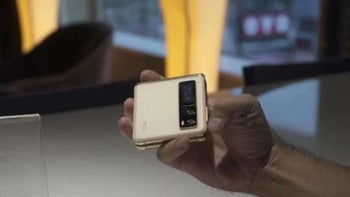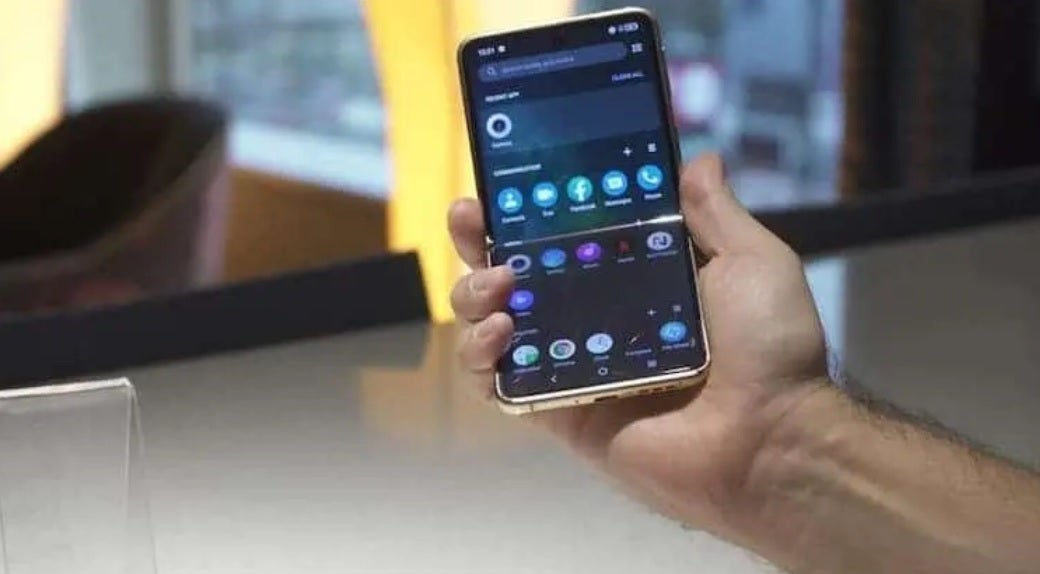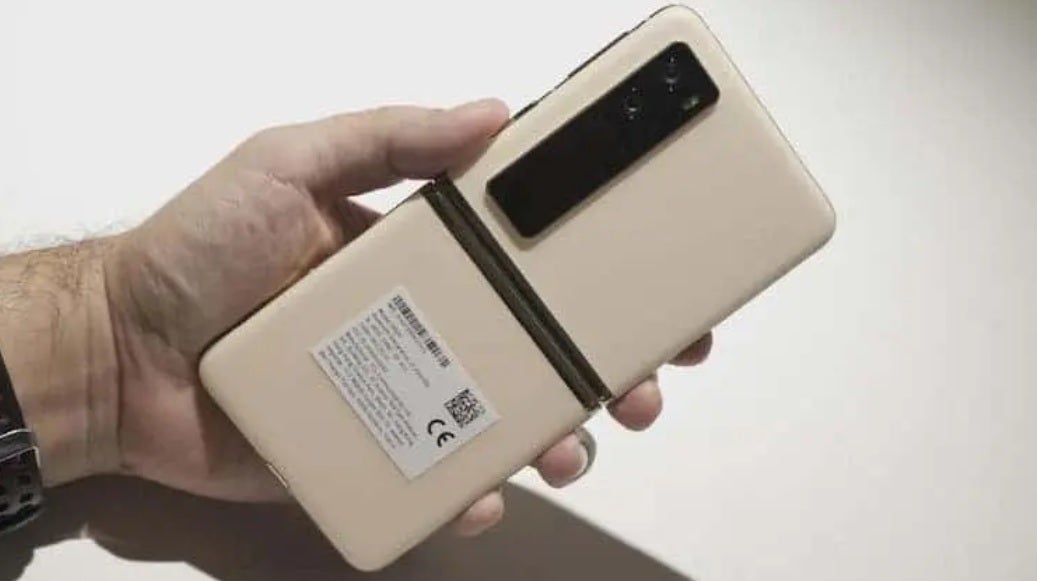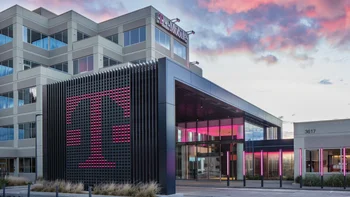At CES, TCL displays Flex V clamshell foldable with pricing as low as $600

With its Galaxy Z Flip-esque design, the new TCL Flex V was recently displayed in Las Vegas at the 2022 Consumer Electronics Show (CES). If you're wondering where TCL has cut corners allowing it to supposedly sell its device for as low as $600 compared to $999.99 for Samsung's clamshell foldable, one reason for the potential 40% savings on the Flex V has to do with the chipsets employed on the two models.
The Snapdragon 765G is expected to power the TCL foldable clamshell
While the Galaxy Z Flip 3 is powered by the Snapdragon 888 chipset (built by Samsung Foundry using its 5nm process node), the Flex V sports a Snapdragon 765G under the hood. The silicon happened to be the most popular chipset used on mid-range handsets in 2020. While we don't know everything about the phone's specs, we can tell you that when flipped open, the display will have a 22:9 aspect ratio making the screen tall and thin.

The TCL Flex V will be priced as much as 40% lower than Samsung's Galaxy Z Flip 3
The Flex V display will also carry a resolution of 1080 x 2400. And while its refresh rate is unknown for now, we wouldn't expect to see a 120Hz refresh rate on a clamshell tagged with such a comparatively low price. Keeping the lights on will be a 3545mAh capacity battery, and while Android 11 was packed into the unit displayed at CES, we should see Android 12 running the actual device when it is ready to be shipped.
The unit's dual main camera array combines 48MP and 16MP sensors with a 44MP sensor used to snap selfies. the Galaxy Z Flip 3, for comparison's sake, is equipped with two 12MP camera (with apertures of f/1.8 and f/2.2) and a 10MP selfie camera with an f/2.4 aperture. When folded closed, the TCL Flex V doesn't leave as large a gap between its two halves as the Galaxy Z Flip 3 does. This results in a crease that reportedly is less noticeable than the one that is visible on Samsung's model.

No release date has been announced for the TCL Flex V
One negative is that at 1.1-inches, the external display on TCL's Flex V is much smaller than the 1.9-inch external display on the Galaxy Z Flip 3. This screen is used for notifications and to be a viewfinder for selfies. When Samsung released the OG Galaxy Z Flip in 2020, it too used a 1.1-inch external display which received plenty of complaints because of its small size. The Galaxy Z Flip 5G kept the size of its external display the same before Samsung raised it to 1.9-inches on last year's Galaxy Z Flip 3.
When opened, the Galaxy Z Flip 3 reveals a 6.7-inch display with a 120Hz refresh rate.
As for the TCL Flex V, the timing of the phone's release is not known at the moment. According to Counterpoint Research, shipments in the foldables sector are supposed to rise 10x by 2023 from 2020's deliveries. And Samsung's share of this market is computed to stay at a lofty 75% from the current 88%. The company is looking to make its Galaxy Z brand more mainstream instead of a novelty.
Foldables are at the start of a cycle that should see prices continue to drop and demand continue to rise
Counterpoint's head of foldables research, senior analyst Jene Park, says "With a significant price drop, improved design, and appearance; Samsung is likely to target younger customers with the new foldable Flip smartphone. The new Galaxy Z models will get S Pen support too; which can help absorb existing Note users." Samsung has dropped the Galaxy Note from its annua; handset lineup.
Park sees Samsung as able to fill the empty space in China's premium phone market and states, "Despite having a negligible market share, Samsung can secure Huawei's vacant spot; and its success can contribute towards total shipment and sales volumes for its new foldables." Globally, Samsung saw shipments of its foldables soar fourfold in 2021. Some of this demand took place as the manufacturer was able to reduce pricing for the Galaxy Z Flip 3.
As parts continue to drop in price, Samsung should be able to reduce pricing for its foldables which in turn should reduce its cost of obtaining supplies. This cycle should keep on going as foldable pricing drops year-over-year which in turn drives lower pricing and higher demand.













Things that are NOT allowed: